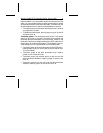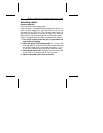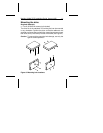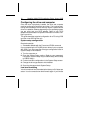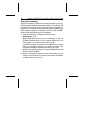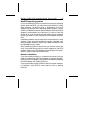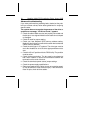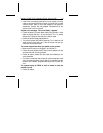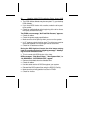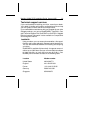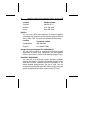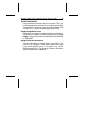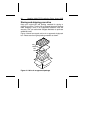
Make sure that the drive is running. Listen carefully for the
drive motor spinning. Also, the drive-activity LED flashes when
the power is turned on. If the LED stays on after power-on,
make sure the interface cable is properly connected and that
no other device on the bus is using the same SCSI ID.
• Verify your host adapter configuration. Make sure the
address configurations your host adapter is using do not
conflict with the addresses other devices in your system use.
Refer to your host adapter’s user guide for assistance. Many
host adapters have a diagnostic utility that can help you
determine whether such conflicts exist.
Verify that the drive works when your host adapter is set with
the factory-default configuration. Refer to your host adapter’s
user guide for assistance determining the factory-default set-
tings.
• Check the CMOS drive type. If you have an AT system, the
CMOS drive-type parameter values must be set to zero or
Not
Installed
in AT systems.
• Check the power supply specifications. The output of your
power supply may not meet the requirements of the new
devices you are installing. If you are not sure whether your
power supply meets your needs, consult your dealer.
• Check for viruses.
Before you load new software, scan the
diskette for viruses.
• Isolate the drive. If there is more than one drive in your
system, configure and install the drive for single drive opera-
tion. If you are installing the drive in a network, verify that the
drive works with DOS.
Medalist 1080sl SCSI Installation Guide, August 1995 17



